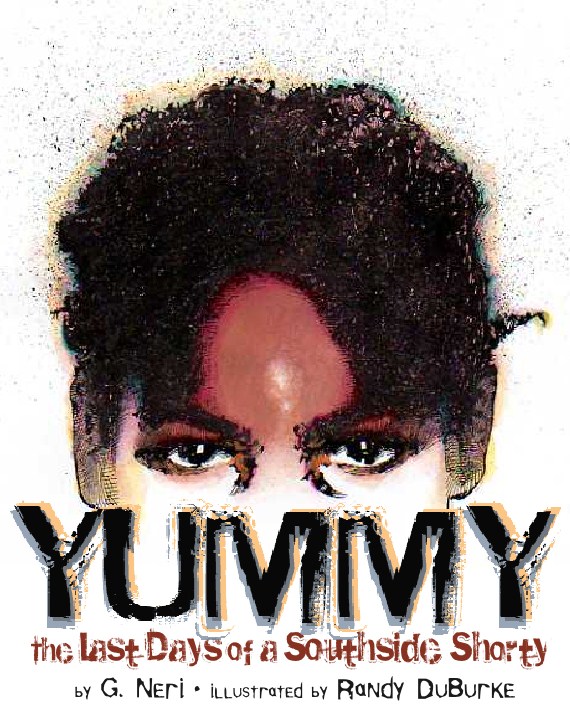I just finished reading G. Neri's devastating graphic novel Yummy, the true story of Robert "Yummy" Sandifer. As a young member of the Black Disciples, Yummy made national headlines in Time Magazine when he shot and killed Shavon Dean in Chicago's Roseland neighborhood. He was 11, she was 14. The story is told by another boy named Roger, who gives us a complicated picture of Yummy. He's a reckless force who beats up Roger and shoplifts. He's a little kid with a squirt gun and a teddy bear, with a prostitute mother and a father serving time. After the murder, Roger seeks to answer one simple question: Why was Yummy the way he was? He gets answers from his classmates, his teachers, the news, and President Clinton himself - but he never gets a clear answer. Roger's own brother Gary is a member of the Black Disciplines Nation - what happens to his Gary after the story? I was chilled by the comparison given to Yummy by Monster, the leader of the Black Disciples: "Right now he's just a pit-bull puppy, but when he grows up, watch out!" The same gangsters who offered this boy solace end up shooting him in the head, to take the heat off them.
So whose fault is it when an 11-year-old joins a gang? Greg Neri doesn't specifically give an answer, but instead gives readers a large picture of the complicated community our kids are snarled in. I've been building relationships with kids in schools for a long time, and I want to clarify something for the reader: there are definitely "Yummys" out there, more than you know, and their pain is real. I'm just a librarian, and I'm not the person most qualified to discuss the topic, but I do know from my experience that for every "Yummy," there are many "Rogers" - amazingly curious, intelligent, resilient kids with the passion to stand up against a prescribed future. Children are not pit-bulls, they're humans. Please don't walk away from this story with a sense of devastation. Walk away from this story with the knowledge that children are powerful, and they have the power to choose.
Everyone in Chicago must read this, especially against the backdrop of school closings. Schools are the safe havens from gang violence, and often the one stable place in a kid's life. When they're closed, the good work of dedicated teachers is undone and children are endangered within the walls of the new schools. CPS teachers are fighting to give the children of Chicago the tools to build their own futures.
Do me a favor and sign the Daily Kos petition to Rahm Emanuel, telling him you prioritize the safety of our kids over a basketball arena for DePaul.
Extra Resources for Educators
- Vimeo: Book Trailer (AMAZING)
- Interview with Author G. Neri and Illustrator Randy DuBurke









